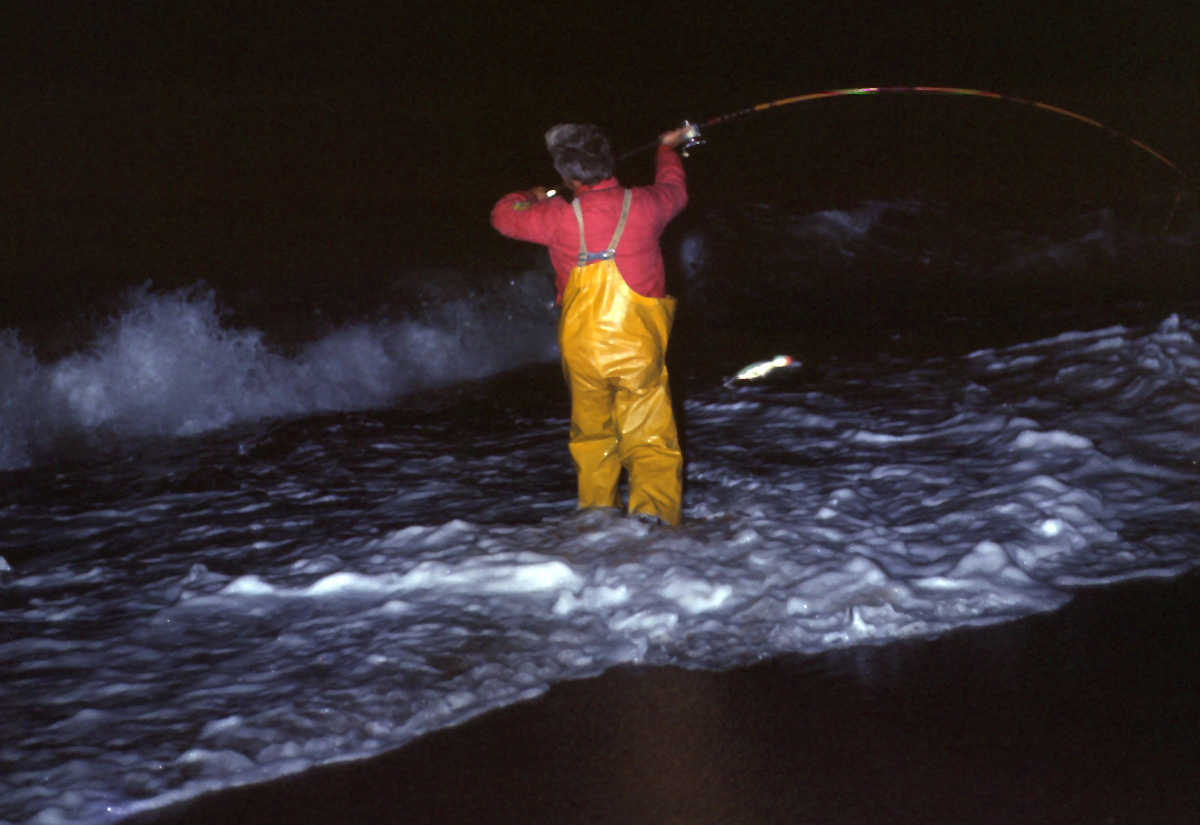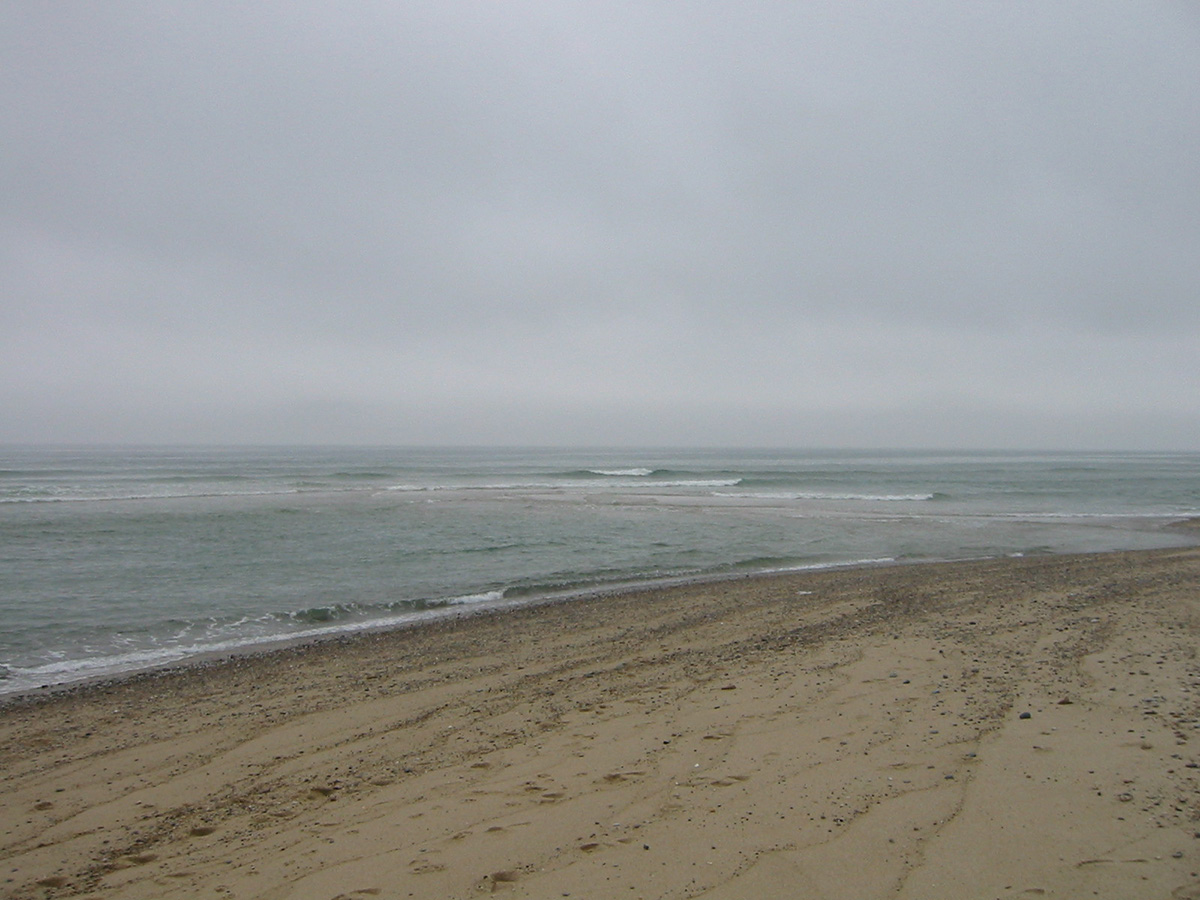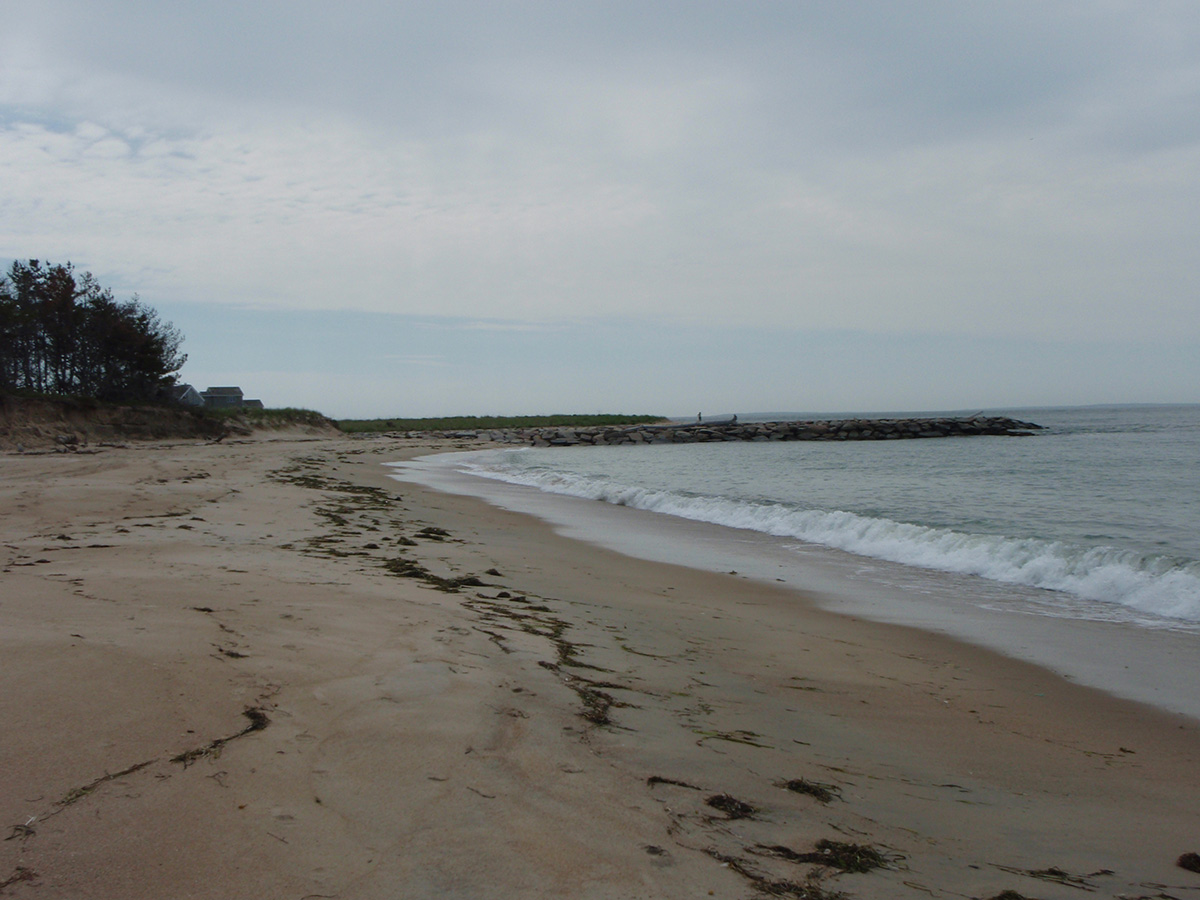
Surfcasters need a strategy to get their fishing started when working a sandy beach.
There is a vastness to many open beaches that can be so intimidating one is often left with not knowing where to start. It happens because of the differences in shore nomenclature where some shores have plenty of structure—bars, holes, points and flow variations like Cape Cod—while others are straight, lack luster beaches that don’t change like those in Rhode Island. There is charm in coastal choices like the structure mix found in heavy tidal exchanges in more northern beaches because you can better determine what looks good for the fishing. Nonetheless, the difficult-to-read sections like Rhode Island may be harder to dope out but there are just as many bass in the waters of Watch Hill as there are at Race Point. You just have to know how to deal with both situations.
High Structure
Places with high tidal exchange, say from the Cape north, are where your beach reading skills are put to work. While reading the water at low tide, surfmen can pick out the holes, bar corners and sloughs. Thus, one quickly learns where to find spots that are likely to hold bass. Wise hungries avoid high tide to read the beach for that reason because there is nothing to see when compared to a good look available at low. Unless I already know there are plenty of fish around, I avoid open beaches that I can’t read. However, when you can see how the bottom is formed, an angler can make out where the water is rushing out from behind a bar and pretty much expect gamefish in the current. Also, stripers are often found in the corners of holes where they have driven bait. I try everything until I can establish a behavior pattern and then only work sections of bottom that lure in linesides.
There are a lot of ways to learn what kind of feeding is taking place. On the Cape we would occasionally catch bass with seriously-abraded chins, clear evidence of digging in the sand either for worms or sand eels. Another hint of digging activity is if you walk on bars at low tide when the water is shallow enough you will sometimes feel holes in the bottom around the size of a half grapefruit. Anytime we have ever felt those “digs” we caught good fish later in the rising tide once there was enough water to cover their backs. In general you read the structure at low then use what you’ve learned the rest of the night. I don’t recommend fishing in daylight.

Watch for Patterns
Much of striper fishing is relying upon things that have worked before. For instance, if you know of blitzes having happened at the Guzzles, say, be sure you have noted what the tide was doing because oftentimes there is a reason why things happen. It gives you a starting point. You won’t always know why they go there at low tide; you don’t have to. Fishermen with a bunch of honey holes have enough options to get them through the night. It’s up to you but I rarely engage in patient fishing so I keep moving because they have to be somewhere.
Many spots appeal to gamefish—stripers and blues—during certain favored stages of tide. Such predictable situations are common. For others you might discover sets of conditions that make the buggahs crazy. Years ago, before seals and the National Park Service on the Cape, at Race Bar, right in front of the lighthouse, during low tide in a southwest gale, a set of conditions presented themselves that put all the stripers and blues in North America in the foam at your feet, even in daylight. All of Cape Cod Bay was booking through 90 feet of depth only two casts out. Yum!
Low Structure
Open beaches with no bar holes, sloughs or points like the shores between Watch Hill, Rhode Island and Matunuck are not as sexy as the Cape, but that stretch hosts some moby stripers that only rarely travel alone. It’s just not that easy and worse, fails in its ability to get a surfcaster horsed enough for a full night of fishing. Without visible structure it is harder to pinpoint where you think your casts should go. You have to work it all without a road map. The mission of covering a lot of shore in the hunt is still the same either with or without viewable structure.
When fishing alone I walk the beach making a cast every 40/50 feet. Between moves I make a cast down the beach to make sure no predictable target I might have missed is laying close to the surf. With two or more casters we skip past each other. The process is more efficient with extra casters who cover more shoreline. This can come in handy on long beaches that may have miles of surf. Keep in mind that any contacts—rubs, hits, misses or landings—are clear evidence that there should be more fish because they frequently travel in schools. Where such evidence occurs the entire operation should be slowed down under the assumption that you’ve come upon them. Of course nothing works all the time. Surfcasting is not that easy.
When we fished the Cape as a growing family, six of us would spread then pass each other moving in one direction, the buggy picking up the last kid to place him or her first. If we failed to hit stripers, which was rare, we could cover 10 miles of beach in a night. We called it the “Russian Trawler System,” which I have mentioned somewhere in my eight striper books and many articles banged out over 47 years of nearly-true stories.

Check Outflows
Any place where a back pond estuary dumps or fills is a magnet for bass, blues and some years, weakfish. These fish hang in the current either tide, but more likely the drop, as they wait for small stuff or even larger baits. You should be fishing these openings first but they are often well-known hot spots and tend to be crowded. The only thing reliable is the cold beer. Waiting for a turn in the rotation is a P.I.A. Besides, in such mob fishing one only lands a minority of contacts where when fishing by yourself you are more likely to get them all. There is a lot to be said for the serenity of the open beach. Been doing it all my life.



